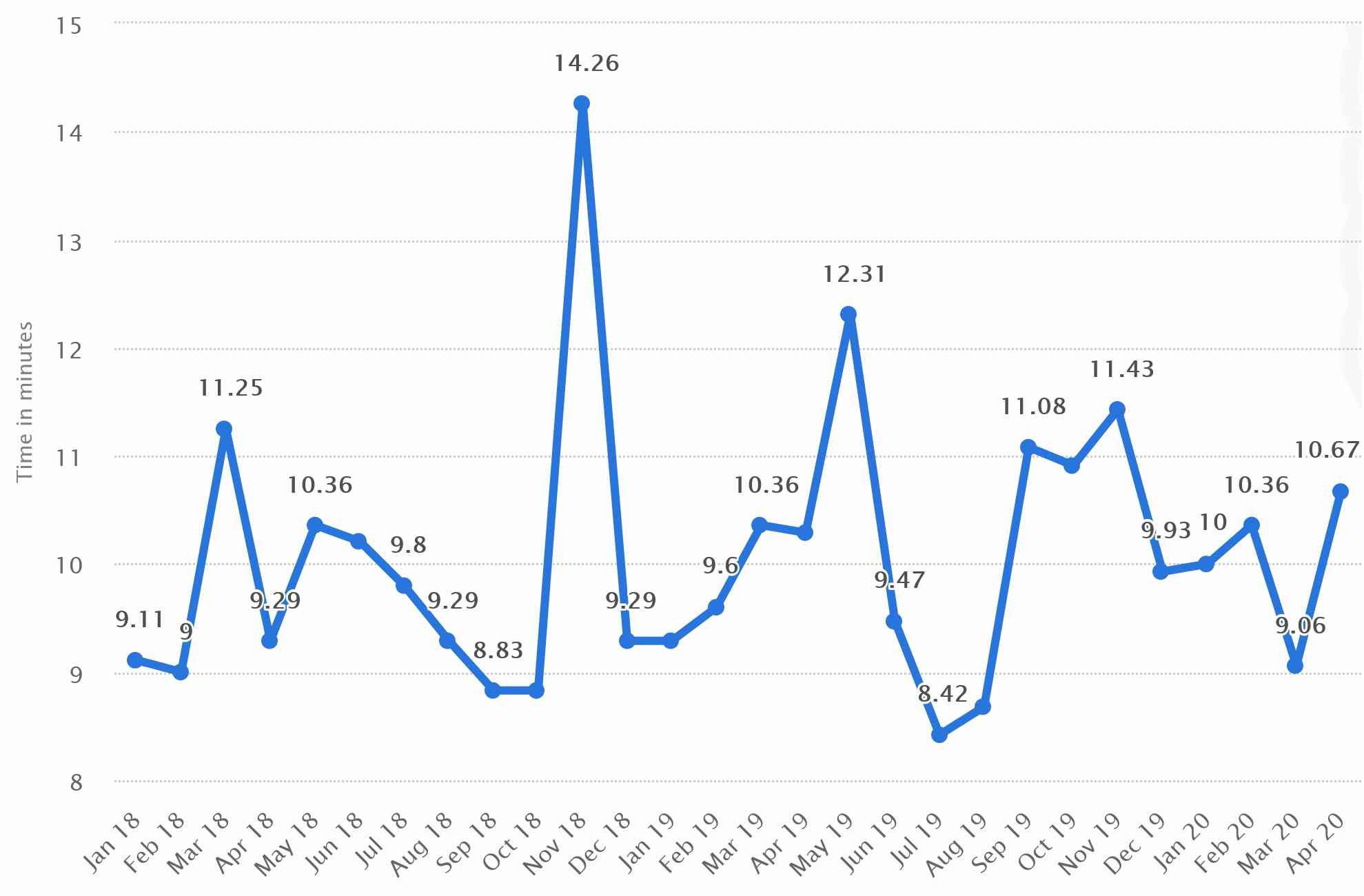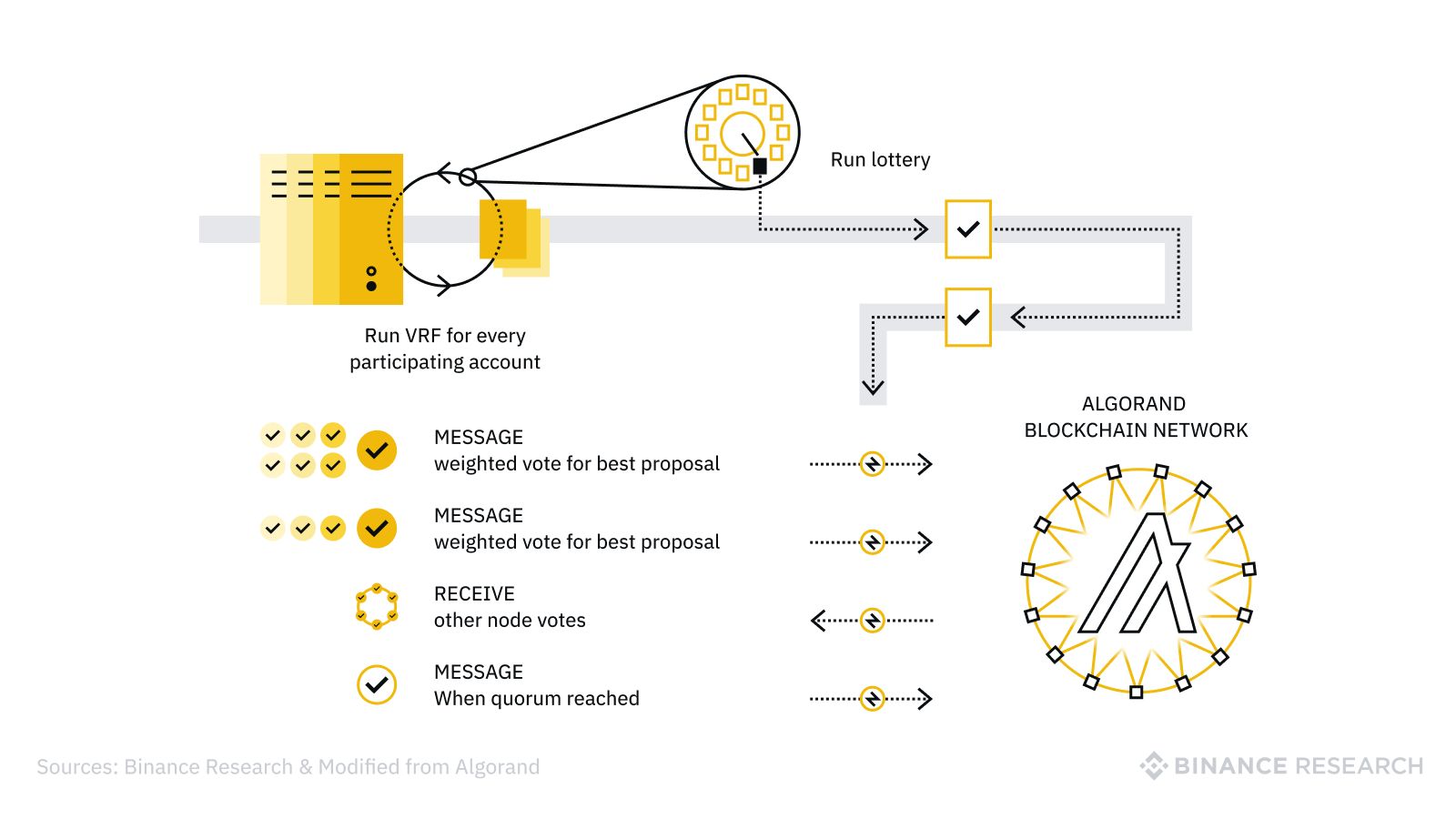Introduction
Welcome to the world of blockchain, where transactions are secured, transparent, and decentralized. If you’ve been exploring the world of cryptocurrencies, you may have come across the term “transaction confirmation time.” It refers to the time it takes for a transaction to be verified and added to a blockchain.
Blockchain technology, pioneered by Bitcoin, has revolutionized various industries by introducing a decentralized and immutable ledger system. It eliminates the need for intermediaries, reduces transaction costs, and enhances security. But how does blockchain confirm transactions? And why does the confirmation process take varying amounts of time?
In this article, we will delve into the intricacies of blockchain transaction confirmation times, exploring the factors that influence them and considering real-world examples. Additionally, we will discuss strategies for improving transaction confirmation times in the ever-evolving world of blockchain technology.
Before we dive deeper, let’s first explain what exactly blockchain is and how it functions.
What is Blockchain?
Blockchain is a revolutionary technology that enables the secure and transparent recording of transactions in a decentralized manner. At its core, a blockchain is a distributed ledger that records and verifies transactions across multiple computers or nodes. The technology was initially introduced to support cryptocurrencies like Bitcoin, but its potential extends far beyond digital currencies.
At its most basic level, a blockchain consists of a chain of blocks, each containing a list of verified transactions. These transactions are grouped together in blocks and are timestamped, creating a sequential chain. What makes blockchain unique is its decentralized nature, as it operates on a network of interconnected nodes, rather than being controlled by a single entity.
When a new transaction is initiated, it is broadcasted to the network of nodes. These nodes work together to validate the transaction by solving complex mathematical puzzles. Once the transaction is verified and confirmed by a consensus mechanism, it is added to a new block, which is then added to the existing chain. In this way, the blockchain grows continuously, with each new block containing a record of confirmed transactions.
One of the defining features of blockchain technology is its immutability. Once a transaction is recorded on the blockchain, it becomes very difficult, if not impossible, to alter or manipulate. This is achieved through cryptographic algorithms that ensure the integrity and security of the data. Consequently, blockchain provides a high level of transparency and trust, as anyone can audit and verify the transactions recorded on the blockchain.
Blockchain technology has numerous applications beyond cryptocurrencies. It can be utilized in supply chain management, healthcare, finance, voting systems, and much more. The decentralized nature of blockchain eliminates the need for intermediaries, reducing costs and improving efficiency. It also enhances security, as the data is distributed across multiple nodes, making it highly resistant to hacking and fraud.
Now that we have a basic understanding of what blockchain is, let’s explore how this technology confirms transactions.
How Does Blockchain Confirm Transactions?
Blockchain technology employs a consensus mechanism to confirm and validate transactions. This mechanism ensures that all participants in the network agree on which transactions are valid and should be added to the blockchain.
The most commonly used consensus mechanism in blockchain networks is called Proof of Work (PoW). In a PoW system, network participants, known as miners, compete to solve complex mathematical puzzles. The first miner to successfully solve the puzzle earns the right to add a new block of transactions to the blockchain. This process, known as mining, requires significant computational power and energy consumption.
When a new transaction is broadcasted to the network, it is added to a pool of unconfirmed transactions, commonly referred to as the mempool. Miners select transactions from the mempool and include them in the block they are currently mining. They then perform the required computational work, trying to find a hash value that satisfies certain criteria.
Once a miner successfully finds a valid hash, they broadcast the newly created block to the network. Other nodes in the network verify the validity of the block and its transactions. If consensus is reached, meaning a majority of nodes agree on the validity of the block, it is added to the blockchain, and the transactions it contains are considered confirmed.
It’s important to note that the confirmation process in blockchain technology is not instantaneous. The time it takes to confirm a transaction depends on several factors, including the network congestion, the complexity of the consensus mechanism, and the transaction fee offered by the user initiating the transaction.
In the next section, we will explore the factors that influence transaction confirmation time in more detail.
Factors Affecting Transaction Confirmation Time
Transaction confirmation time in a blockchain network is influenced by various factors. Understanding these factors can help us comprehend why transaction times can vary significantly.
1. Network Congestion: When a blockchain network experiences high traffic, such as during periods of intense trading or increased usage, the network can become congested. As a result, the number of unconfirmed transactions in the mempool increases, leading to longer confirmation times.
2. Block Size and Block Time: The size of a block and the time it takes to create a new one can impact transaction confirmation times. In some blockchain networks, such as Bitcoin, the block size is limited, meaning it can only accommodate a certain number of transactions. When the demand for transactions exceeds the block size capacity, it can lead to a backlog of unconfirmed transactions and longer confirmation times. Additionally, the time it takes to mine and validate a new block also influences the transaction confirmation time.
3. Transaction Fee: Miners play a crucial role in confirming transactions, and they are motivated by financial incentives. When a user initiates a transaction, they can include a transaction fee. Higher transaction fees incentivize miners to prioritize the transaction and include it in the next block they mine. Consequently, transactions with higher fees are more likely to be confirmed faster than those with lower fees.
4. Blockchain Consensus Mechanism: Different blockchain networks use different consensus mechanisms, and these mechanisms can impact transaction confirmation times. For example, Proof of Work (PoW) requires miners to solve complex puzzles, which can take time and energy. On the other hand, networks that use Proof of Stake (PoS) or other consensus mechanisms may have faster confirmation times as they don’t require extensive computational work.
5. Transaction Size: The size of a transaction, in terms of data, can also affect confirmation times. Larger transactions require more computational resources to verify and validate, which can lead to increased confirmation times.
It’s important to note that these factors can interact with each other and vary depending on the specific blockchain network. As blockchain technology continues to evolve, innovative solutions and optimizations are being developed to address these factors and improve transaction confirmation times.
In the following sections, we will explore the confirmation times of different cryptocurrencies and highlight real-world examples of transaction confirmation times.
Blockchain Confirmation Times for Different Cryptocurrencies
The confirmation times for transactions can vary across different blockchain networks and cryptocurrencies. While Bitcoin, being the first and most popular cryptocurrency, is known for relatively longer confirmation times, other cryptocurrencies have implemented various mechanisms to achieve faster transaction confirmations.
Bitcoin (BTC), with its Proof of Work (PoW) consensus mechanism, has an average block time of 10 minutes. This means that it takes on average 10 minutes for a new block to be mined and for transactions to be confirmed. However, during periods of high network congestion, confirmation times can be longer, sometimes taking hours.
Ethereum (ETH), the second-largest cryptocurrency by market capitalization, also utilizes a PoW consensus mechanism. However, it has a shorter target block time of around 15 seconds. This faster block time allows for quicker confirmation of transactions and makes Ethereum well-suited for applications requiring faster settlements.
Other cryptocurrencies have introduced alternative consensus mechanisms to achieve even faster transaction confirmations. For instance, Ripple (XRP) uses a distributed consensus algorithm called the Ripple Protocol Consensus Algorithm. This allows for near-instant confirmation times, with transactions being settled within seconds.
Stellar (XLM) is another cryptocurrency that focuses on fast transaction confirmations. It employs the Stellar Consensus Protocol, which enables transaction confirmations in just a few seconds.
Litecoin (LTC), often known as “silver to Bitcoin’s gold,” also operates on a PoW consensus mechanism but with a shorter block time of 2.5 minutes. This results in faster transaction confirmations compared to Bitcoin.
It’s important to consider that confirmation times may vary for individual transactions within these cryptocurrencies based on factors such as network congestion and transaction fees. Higher transaction fees can incentivize miners to prioritize transactions, resulting in quicker confirmations.
Blockchain developers and researchers are continuously exploring new consensus mechanisms and approaches to further enhance transaction confirmation times. Some projects are experimenting with hybrid consensus models or implementing layer-two scalability solutions to increase the throughput and efficiency of their networks.
Now, let’s dive into real-world examples to exemplify the transaction confirmation times of different cryptocurrencies.
Real-World Examples of Transaction Confirmation Times
To illustrate the transaction confirmation times of various cryptocurrencies, let’s explore some real-world examples:
1. Bitcoin (BTC): Due to its Proof of Work consensus mechanism and 10-minute block time, transaction confirmation times for Bitcoin can be relatively long. During periods of normal network activity, transactions can take around 10 to 30 minutes to confirm. However, in times of high congestion, confirmation times can extend to several hours or even longer.
2. Ethereum (ETH): With a shorter block time of around 15 seconds, Ethereum offers faster transaction confirmations compared to Bitcoin. On average, Ethereum transactions are confirmed within a few minutes. However, during peak periods, when the network is congested, confirmation times can increase, sometimes taking more than a minute.
3. Ripple (XRP): As mentioned earlier, Ripple aims for near-instant transactions. XRP’s consensus algorithm allows for incredibly fast confirmation times, often settling transactions within a few seconds. This makes it a preferred cryptocurrency for real-time cross-border payments and financial transactions.
4. Stellar (XLM): Similar to Ripple, Stellar focuses on fast transactions. With its Stellar Consensus Protocol, confirmation times are typically around 2 to 5 seconds. This makes Stellar ideal for applications that require quick settlements and micropayments.
5. Litecoin (LTC): Litecoin, often referred to as the “silver to Bitcoin’s gold,” offers faster transaction confirmations due to its shorter block time of 2.5 minutes. On average, Litecoin transactions are confirmed within a few minutes. This makes Litecoin a popular choice for those who seek faster transactions compared to Bitcoin.
These examples provide insights into the varying confirmation times of different cryptocurrencies. It’s important to note that confirmation times can still be affected by network congestion, transaction fees, and other factors specific to each network. It’s always advisable for users to consider the current network conditions and adjust their transaction fees accordingly to ensure timely confirmations.
As blockchain technology continues to evolve, developers are working on scalability solutions and consensus algorithm improvements to further enhance transaction speeds and reduce confirmation times. These efforts aim to address the existing limitations and make blockchain technology more suitable for broader adoption in various industries.
Improving Transaction Confirmation Time
As the demand for blockchain technology and cryptocurrencies continues to grow, there is a need to improve transaction confirmation times to accommodate higher transaction volumes and enhance user experience. Here are some approaches and solutions being explored to improve transaction confirmation time:
1. Segregated Witness (SegWit): SegWit is a protocol upgrade that was implemented in some cryptocurrencies, including Bitcoin and Litecoin. It optimizes block space by separating transaction data from the signatures, allowing for more transactions to be included in a block. This increase in block capacity helps to reduce congestion and improve confirmation times.
2. Layer-Two Solutions: Layer-two scalability solutions, such as the Lightning Network, are being developed on top of existing blockchain networks. These solutions enable off-chain transactions, which can be settled quickly and with lower fees. By conducting a large number of transactions off-chain and only occasionally settling them on the blockchain, layer-two solutions significantly improve scalability and transaction confirmation times.
3. Consensus Algorithm Upgrades: Cryptocurrencies are exploring alternative consensus algorithms that can offer faster transaction confirmation times while maintaining security and decentralization. Proof of Stake (PoS) and Delegated Proof of Stake (DPoS) are two examples of consensus algorithms that require fewer computational resources and offer faster block creation times, resulting in quicker transactions.
4. Transaction Fee Optimization: Users have the option to include transaction fees when initiating a transaction. Higher transaction fees can incentivize miners to prioritize the transaction, leading to faster confirmations. By selecting an appropriate transaction fee based on network conditions, users can optimize their chances of a timely confirmation.
5. Network Upgrades and Capacity Expansion: Blockchain networks are continuously working on upgrades and expanding their capacity to handle larger transaction volumes. Increasing the block size limit, reducing transaction validation time, and improving network infrastructure are some of the measures being taken to enhance transaction confirmation times.
6. Interoperability and Cross-Chain Solutions: Interoperability between different blockchain networks and cross-chain communication protocols can help streamline transactions and improve confirmation times. These solutions enable the transfer of assets and data across multiple blockchains, reducing the need for multiple confirmations and speeding up transactions.
By implementing these improvements and innovations, blockchain technology aims to address the challenge of transaction confirmation times and make cryptocurrency transactions faster and more efficient. As the technology evolves, we can expect further advancements and optimizations to enhance the performance and scalability of blockchain networks.
Conclusion
Blockchain technology has revolutionized the way transactions are recorded, verified, and confirmed. While transaction confirmation times vary across different blockchain networks and cryptocurrencies, understanding the factors influencing these times is crucial.
Factors such as network congestion, block size and time, transaction fees, consensus mechanisms, and transaction size all directly impact the time it takes for a transaction to be confirmed on the blockchain. It’s important for users to be aware of these factors and adjust their expectations accordingly.
Bitcoin, with its Proof of Work consensus mechanism, is known for longer confirmation times, often ranging from minutes to hours. On the other hand, cryptocurrencies like Ripple and Stellar utilize different consensus algorithms, enabling near-instant transaction confirmations, typically within seconds or a few seconds.
To improve transaction confirmation times, various approaches and solutions are being explored. Segregated Witness, layer-two solutions, consensus algorithm upgrades, transaction fee optimization, network upgrades, and interoperability solutions are all contributing to faster and more efficient transaction confirmations.
As blockchain technology continues to evolve and mature, transaction confirmation times are likely to improve further. Scalability solutions, consensus algorithm innovations, and ongoing research and development efforts are aimed at addressing the existing limitations and optimizing blockchain networks for faster, more secure, and more scalable transactions.
As users and enthusiasts of blockchain technology, staying informed about these advancements and being proactive in selecting appropriate transaction fees and network optimizations can contribute to a smoother and quicker transaction experience.
In conclusion, with the continuous evolution of blockchain technology, we can look forward to faster and more efficient transaction confirmation times, making blockchain even more suitable for a wide range of applications and driving further adoption in the digital economy.

























